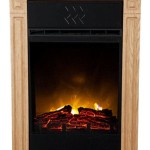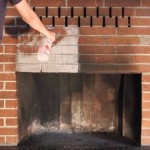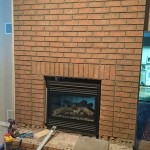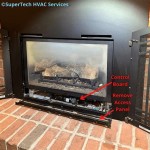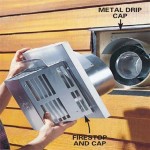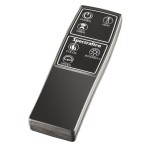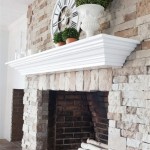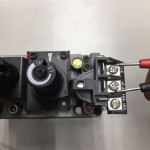Insulating Gas Fireplace Vent: Enhancing Efficiency and Safety
Gas fireplaces offer a convenient and aesthetically pleasing alternative to traditional wood-burning fireplaces. They provide warmth and ambiance with the simple flick of a switch, eliminating the need for wood gathering and ash removal. However, like any appliance utilizing combustion, gas fireplaces require proper venting to safely expel exhaust gases. The vent system, while essential for safety, can also become a source of energy loss if not adequately insulated. This article will explore the importance of insulating gas fireplace vents, detailing the benefits, appropriate insulation materials, and installation considerations.
The primary function of a gas fireplace vent is to remove products of combustion, including carbon monoxide, water vapor, and other potentially harmful gases, from the living space. These gases are a byproduct of the natural gas or propane burning within the fireplace. Inadequate venting can lead to a buildup of these substances, posing significant health risks to occupants. Furthermore, proper venting ensures that the fireplace functions efficiently, maintaining the appropriate air-to-fuel ratio for optimal combustion.
Uninsulated gas fireplace vents can contribute significantly to heat loss, particularly in colder climates. Metal vents, commonly used in these systems, are highly conductive, meaning they readily transfer heat from the warm exhaust gases to the surrounding environment. This heat loss not only reduces the overall efficiency of the fireplace but also increases energy consumption as the heating system works harder to compensate for the lost warmth. Insulating the vent can significantly reduce this heat transfer, keeping more heat within the home.
Benefits of Insulating a Gas Fireplace Vent
Insulating a gas fireplace vent offers several distinct advantages, ranging from improved energy efficiency to enhanced safety and comfort. These benefits underscore the importance of considering insulation as an integral part of any gas fireplace installation or upgrade.
Improved Energy Efficiency: The most direct benefit of insulating a gas fireplace vent is a reduction in heat loss. By minimizing the transfer of heat from the exhaust gases to the surrounding environment, insulation allows more of the heat generated by the fireplace to remain within the home. This translates to lower energy bills and reduced reliance on the primary heating system. The efficiency gains are particularly noticeable in homes with older, less efficient heating systems.
Reduced Condensation and Corrosion: When warm, moist exhaust gases travel through a cold vent, condensation can occur. This condensation can lead to corrosion of the vent pipe, potentially compromising its structural integrity and safety over time. Insulation helps maintain a higher vent temperature, reducing the likelihood of condensation and prolonging the lifespan of the vent system. This is especially important in areas with cold winters where the temperature difference between the exhaust gases and the outside air is significant.
Enhanced Safety: While the vent itself is designed to safely exhaust combustion byproducts, an improperly insulated vent can indirectly pose safety risks. Reduced condensation minimizes the risk of water damage to surrounding building materials, which can lead to mold growth and structural issues. Furthermore, a warmer vent reduces the risk of backdrafting, where exhaust gases are drawn back into the home. Proper insulation contributes to a more stable and reliable venting system, reducing the potential for these hazards.
Increased Comfort: By reducing heat loss, insulation contributes to a more comfortable indoor environment. The fireplace can effectively heat the intended space without losing heat through the vent system, resulting in a more consistent and comfortable temperature throughout the home. This is especially beneficial in rooms with large windows or poor insulation.
Suitable Insulation Materials
Selecting the appropriate insulation material is crucial for achieving optimal performance and ensuring the safety of the gas fireplace vent system. Not all insulation materials are suitable for this application, and careful consideration must be given to factors such as R-value, temperature resistance, and flammability.
Wrap-around Insulation Blankets: These blankets are specifically designed for insulating pipes and flues. They are typically made from fiberglass or mineral wool encased in a foil or vinyl facing. Wrap-around blankets are easy to install and provide a reliable level of insulation. They are often precut and sized to fit standard vent diameters, simplifying the installation process. It is critical to ensure that the blanket is rated for the temperatures produced by the gas fireplace vent and that it is installed according to the manufacturer's instructions, paying close attention to overlapping seams and securing the blanket properly.
Foil-Faced Fiberglass Insulation: This type of insulation is commonly used in walls and ceilings but can also be adapted for insulating gas fireplace vents. The foil facing provides a vapor barrier, further reducing the risk of condensation. When using fiberglass insulation, it is imperative to ensure the foil facing is properly sealed to prevent moisture penetration. This type of insulation should be carefully wrapped around the vent, ensuring complete coverage and securing it with foil tape specifically designed for high-temperature applications. Care should be taken to avoid compressing the insulation excessively, as this reduces its R-value.
Mineral Wool Insulation: Mineral wool, also known as rock wool or slag wool, is a fire-resistant insulation material made from recycled materials. It offers excellent thermal performance and is less prone to settling than fiberglass. Mineral wool can be used in blanket form or as loose-fill insulation. When using mineral wool blankets, the installation process is similar to that of fiberglass blankets. Loose-fill mineral wool can be used to insulate around the vent pipe where access is limited. However, it is crucial to ensure that the loose-fill insulation is contained and does not come into direct contact with the vent pipe.
Spray Foam Insulation (with caution): While spray foam insulation offers excellent thermal performance, its use around gas fireplace vents requires extreme caution. Some types of spray foam are not rated for the high temperatures produced by vent pipes and can pose a fire hazard. If considering spray foam, only closed-cell foams specifically rated for high-temperature applications should be used, and professional installation is strongly recommended. The manufacturer's specifications must be carefully reviewed to ensure compatibility with the gas fireplace vent system. Furthermore, spray foam can be difficult to remove or repair, making it a less flexible option than other insulation materials.
Key Considerations for Installation
Proper installation of gas fireplace vent insulation is paramount to ensure its effectiveness and prevent potential safety hazards. Incorrect installation can compromise the insulation's thermal performance, increase the risk of condensation, or even create a fire hazard. Adhering to best practices and consulting relevant building codes are essential for a successful and safe installation.
Clearance to Combustibles: One of the most critical considerations is maintaining proper clearance to combustible materials. Gas fireplace vents generate significant heat, and direct contact with flammable materials, such as wood framing or insulation, can lead to a fire. Building codes typically specify minimum clearance requirements for vent pipes, and these requirements must be strictly followed. When installing insulation, ensure that it does not encroach upon the required clearance. Using non-combustible spacers or shields can help maintain the necessary distance.
Sealing and Overlap: Proper sealing of insulation seams and overlaps is crucial to prevent air leakage and moisture penetration. Gaps in the insulation can significantly reduce its effectiveness and allow condensation to form, leading to corrosion and potential water damage. Use foil tape specifically designed for high-temperature applications to seal all seams and overlaps. Ensure that the tape is applied smoothly and securely, creating an airtight and watertight seal. Overlapping the insulation layers provides an additional barrier against air and moisture infiltration.
Vent System Type and Manufacturer's Instructions: Different types of gas fireplace vents, such as direct vent (coaxial) and B-vent systems, have specific installation requirements. Always refer to the vent manufacturer's instructions for guidance on proper insulation practices. The manufacturer may specify particular insulation materials or installation methods that are best suited for their vent system. Deviating from the manufacturer's instructions can void the warranty and potentially compromise the safety and performance of the system.
Professional Installation: For homeowners unfamiliar with insulation installation or gas fireplace systems, professional installation is highly recommended. A qualified HVAC technician or insulation contractor has the expertise and experience to ensure that the insulation is installed correctly and safely. Professionals can also assess the existing vent system for any potential issues, such as corrosion or damage, and recommend appropriate solutions. While professional installation may incur additional costs, it provides peace of mind knowing that the insulation is installed correctly and meets all safety requirements.
By understanding the benefits, selecting appropriate materials, and adhering to proper installation practices, homeowners can effectively insulate their gas fireplace vents, improving energy efficiency, enhancing safety, and creating a more comfortable living environment. Careful planning and attention to detail are essential for a successful and safe insulation project.
Gas Fireplace Venting Explained Heat Glo
Insulating Around Direct Vent Fireplace Hearth Com Forums Home

Icc Direct Vent Gas Venting Insulated Wall Thimble
Gas Fireplace Venting Explained Heat Glo

Insulating A Direct Vent Gas Fireplace Fine Homebuilding
Gas Fireplace Exterior Wall Insulation Vent Cover Hearth Com Forums Home
Insulating Around Fireplace Flue Diy Home Improvement Forum

Fixing A Draft Fireplace Doghouse Kickout Diy Home Improvement Forum

Gas Fireplaces Direct Vent Vs Free Fine Homebuilding

Mold From Now Need To Insulate Properly Greenbuildingadvisor
Related Posts

